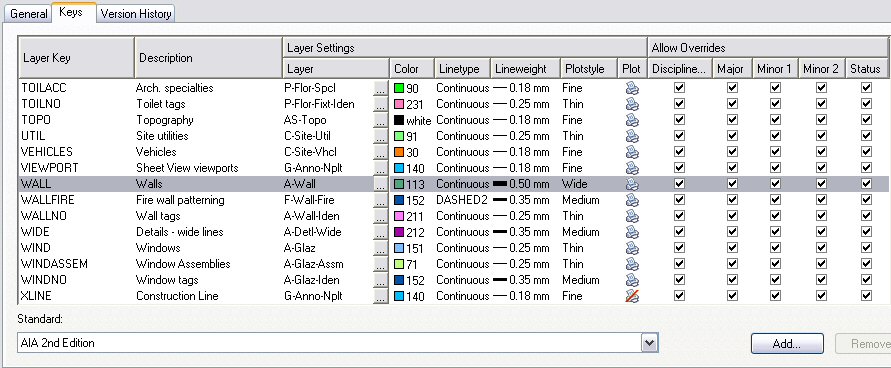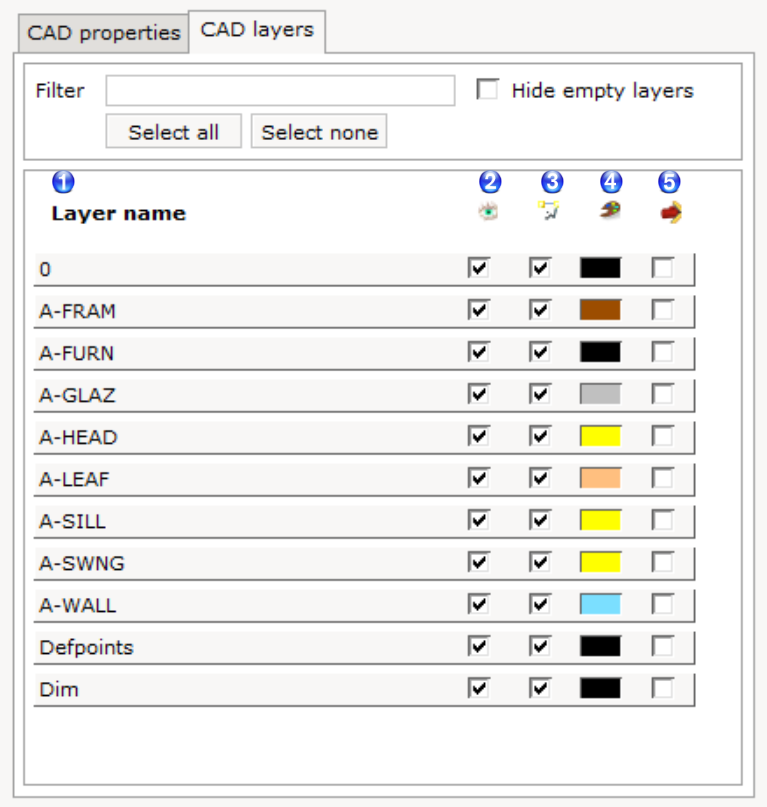



#CAD LAYERS AUXL WINDOWS#
Level changes, ramps, pits, depressions Paving, tile, carpet patterns Shafts Signage Architectural specialties (accessories, etc.) Stair treads, escalators, ladders Toilet partitions Architectural woodwork (field-built cabs/counters) Windows, curtain walls, glazed partitions Full-height glazed walls and partitions Window number Windows and partial-height glazed partitions Window sills Roof Level changes Roof outline Roof surface patterns, hatching Walls general Interior Building Wall Fire wall patterning Full-height walls, stairs and shaft walls1 PageĬolor4-cyan 1-red 4-cyan 4-cyan 4-cyan 7-white 4-cyan 7-white 4-cyan 4-cyan 4-cyan 4-cyan 5-blue 4-cyan 1-red 5-blue 4-cyan 2-yellow 4-cyan 1-red 1-red 1-red 4-cyan 1-red 2-yellow 1-red 2-yellow 1-red 4-cyan 2-yellow 5-blue 2-yellow 1-red 1-red 2-yellow 2-yellow 1-red 2-yellow 2-yellow 4-cyan 2-yellow 1-red 1-red 2-yellow 4-cyan 5-blue 7-white 9-lt grey 9-lt grey Equipment - built in Ceiling-mounted or suspended equipment Fixed equipment Equipment identification numbers Moveable equipment Floor information Casework (manufactured cabinets) Elevator cars and equipment Stair and balcony handrails, guard rails Room numbers, names, targets, etc. that we set at specific setting for.AIA CAD Layer GuidelinesLayer Name DescriptionGeneral Text Redlines Symbols Legends and schedules Dimensions Border and Title Block Job Notes Construction lines, nonplotting information, viewports Key notes Area calculation boundary lines Room numbers, tenant identifications, area calcs Occupant or employee names Area cross hatching Ceiling information Ceiling grid Ceiling patterns Suspended elements Doors Door number, hardware group, etc. Answer (1 of 7): According to all the the vehicle manufacturers that have spoken to me, a CD player is available in just about any vehicle that they manufacture or are planning to manufacture. I dont remember uploading it back into the pallet, but the pallett definatly had the updated version.Ģ- The Tool Pallett also lost tool property information, such as: Aux Scale, Layer, Color, etc.

It was only when I "Exported" the tabs and each user then "Imported" the tabs, which they then showed the pallett information.īut then we've had a few strange things occur.ġ- After I modified a single block in the Standards dwg the pallet "re-organized" itself. When the other 4 users path to the tool pallett folder, then open the Pallets window "CTR元" There is no Information listed, an empty pallett. Now while in Windows Explore and viewing the network folder, the pallett does reside where it was supposed to. E - AUXL - EXST Existing auxillary systems. These include not only layer names but colors, line weights and types, etc. The layering convention is based on AIA CAD Layer Guidelines, Second Edition. So the final result was a pallett that has 8-9 tabs each with 15-20 blocks. I know this is an older thread, but if you are preparing building or site drawings there is now a single definitive standard for CAD layers which is to be applied by all parties in the process: architects, structural engineers, MEP, etc. I then reorganized the pallet, adding multiple tabs to group blocks that are relatable to specific project types together. All drawings must be purged completely at final completion of the drawing to remove all unused blocks, dimension styles, layers, line types, plot styles, text. I then created a tool pallett based on blocks that reside within a specific company standards dwg file. Layers with no status character are assumed to be proposed/new items. E-ALRM E-AREA E-AREA-OFST E-AREA-SHAD E-AUXL E-BELL E-CABL E-CABL-COAX E-CABL-FIBR E-CABL-MULT E-CABL-TRAY E-CATH E-CATH-ANOD E-CATH-CURR E-CATH-TEST E-CCTV E-CLOK.
#CAD LAYERS AUXL SOFTWARE#
All 5 Users have setup their file location in options to a network folder specific to the tool pallets. procedures discussed are based on AutoCAD Release 2010 and other software used by. Because CAD Layer Guidelines, Second Edition was published before, and later incorporated into, the NCS Version 1.0, this could not be avoided. I should have been a little more defined.


 0 kommentar(er)
0 kommentar(er)
